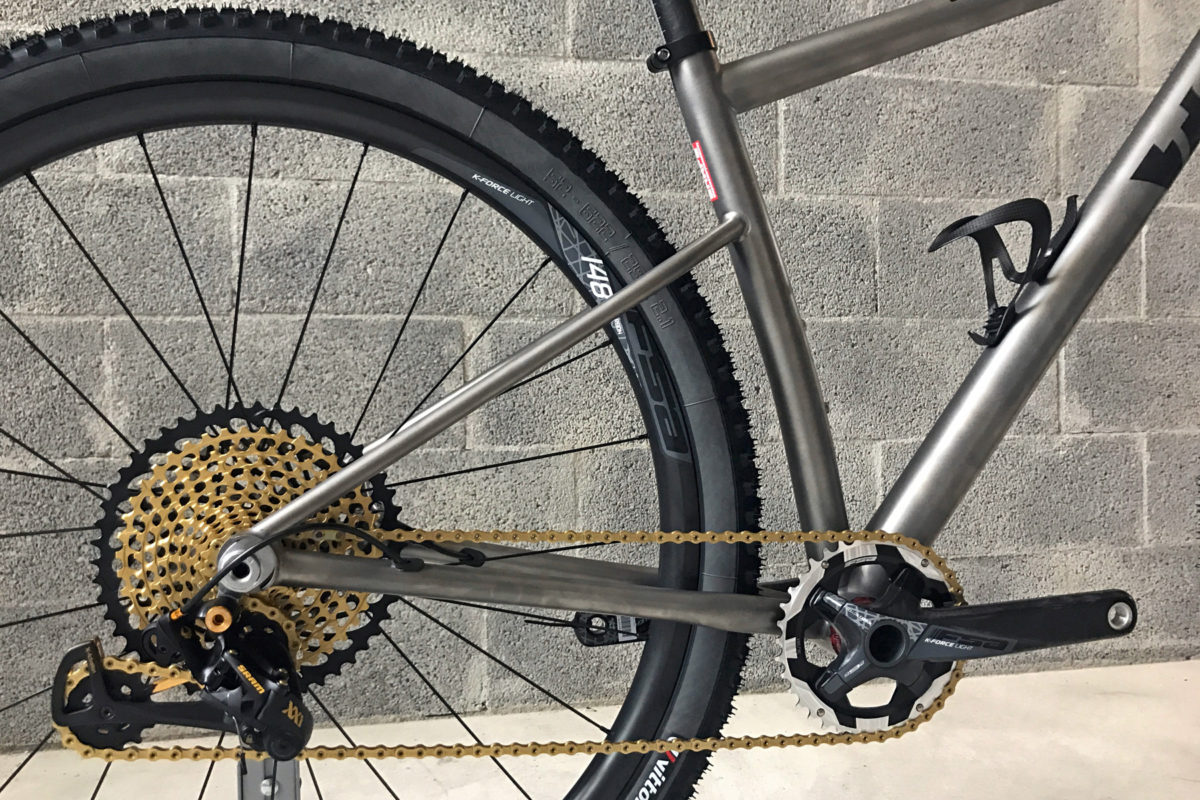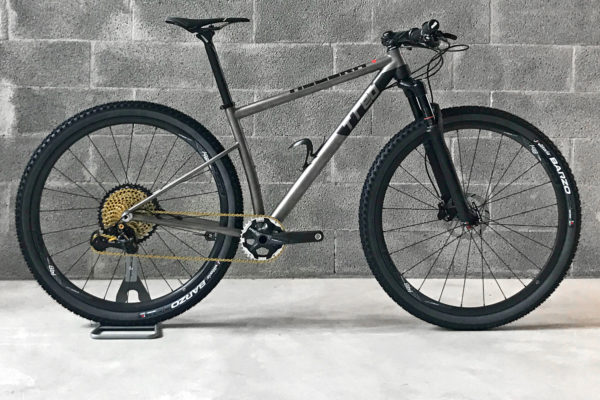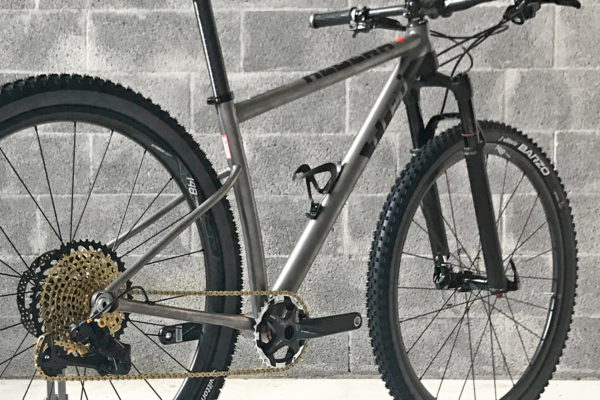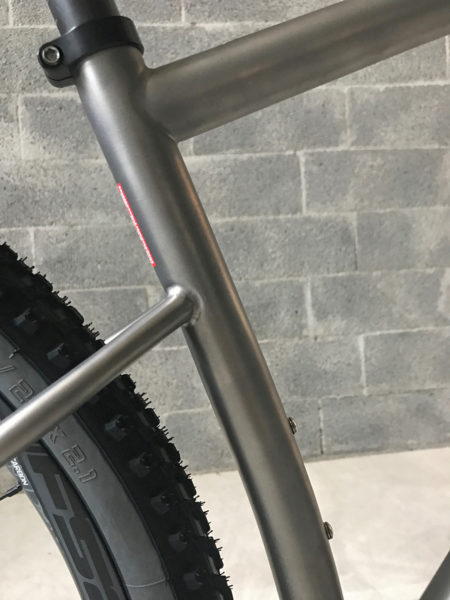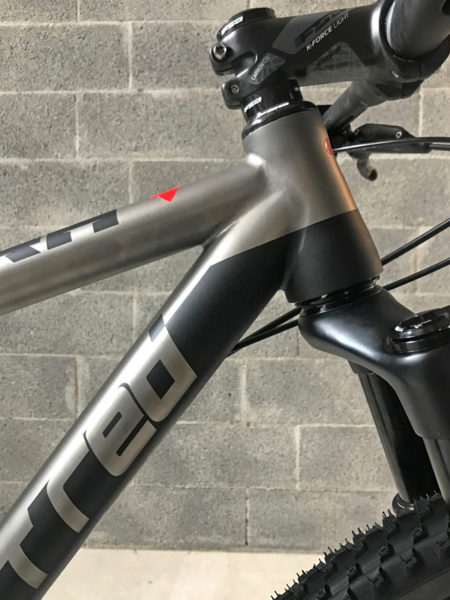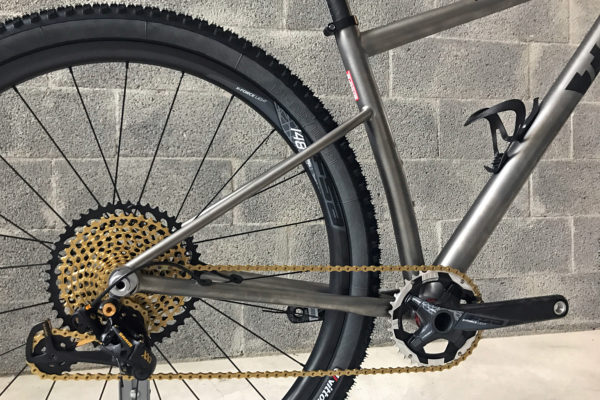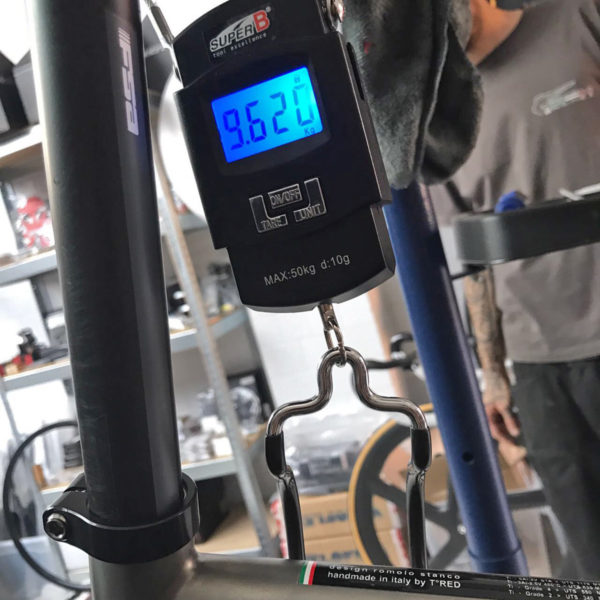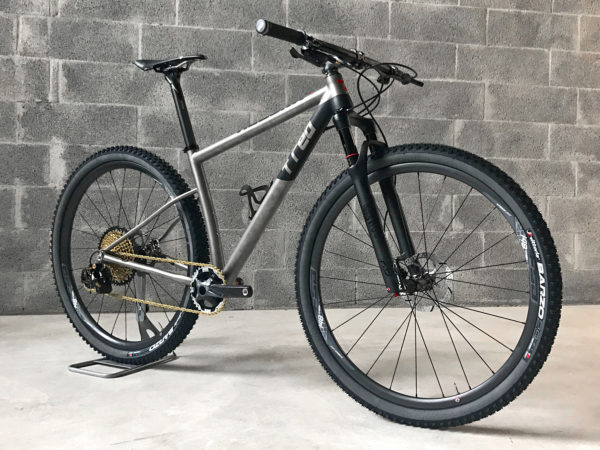The Italian frame builders at T°Red have given us an exclusive first look at the new Hedera titanium cross-country hardtail they’ve just brought out of development. A project of R&D head Romolo Stanco and TRed’s own TOOT Tech lab, which crafts their most advanced new bikes, the Hedera will be the first dedicated mountain bike to find its place in their production catalog. The premium XC hardtail uses some apparently unique & even patented nickel-titanium metallurgy, along with a dropped seatstay design, to provide controlled vertical flex for a ride quick enough to race XC and comfortable enough for all day marathon events as well…
The new mountain bike will make its debut this weekend at the cross country marathon in Monza, Italy before being put into XC race service next week under TRed’s multi-discipline athlete Mattia Finazzi.
The Hedera is one to the latest crop of hardtails to mix XC & trail riding geometry to create a more of an endurance race bike, but the way it goes about it seems pretty unique (if not entirely transparent because it is hidden in the metal alloy.) Titanium never tends to hurt in building in comfort, but even so this bike is said to be built from four different titanium alloys to create a ride that claims to be both stiff and vertically very forgiving.
The Hedera designs flexion into the rear triangle using patented “shape memory nickel-titanium alloys” that work together with other titanium alloys that cannot be readily compressed. The idea is that the seatstays (and to a much lesser extent the seattube as well) are able to significantly deflect like a controlled leaf spring to absorb bump inputs at the rear wheel.
That’s all something we’ve heard before. But the TRed Hedera takes it to a new extreme, with test figures suggesting the rear axle can deflect up to 37mm/1.46″ (and forward 7mm, keeping the chainstay length fixed) under a maximal load input. That puts it beyond the max. 30mm travel realm of a typical softail, without the need for a spring or elastomer, due to the damping character that seem inherent in the alloy composition.
Chainstay length for the 29er needs to stay fairly long at 442mm to allow for that movement in the rear end, but the rest of the bike’s race geometry keeps the ride fast. A steep 70.5° headtube places the Hedera firmly into the XC race category, with the frame paired with a 100mm RockShox Sid WC fork to round out quick, precise handling.
The curved seattube gives it an effective 73° seat angle, and this size Medium bike ends up with fairly average (for an XC hardtail) 618mm of stack and a 419mm reach. The Hedera will be available in a four size stock sizing range, plus the full custom geometry that TRed offers on all of their bikes.
Standards-wise the XC hardtail gets a 12mm Boost 148 rear end, a T47 threaded bottom brackets, a tapered 1/5″ internal headset, and a 31.6 seatpost (making it dropper post friendly if you want to go that route.)
This complete bike we’ve been shown hung on TRed’s scale at 9.62kg with a SRAM XX1 Eagle groupset, FSA K-Force wheels & cockpit, and Vittoria Barzo tubeless tires. They say it will be no problem to build race-able complete bikes well under 9.5kg if buyers want.
TRed tell us the bike has been developed with the oversized bottom bracket and stiff chainstays to deliver excellent power transfer & snappy acceleration. But really it is the ability of the rear axle to move up and down that will stick the rear wheel to the ground through the rough stuff, for a level of traction unlike any other hardtail out there.
The new Hedera will be available as part of TRed’s official catalog later in the month of June 2017. The unique frames will start at 3900€ in stock sizes, with custom geometry not adding anything in price, but the sky being the limit for custom complete bike builds.
